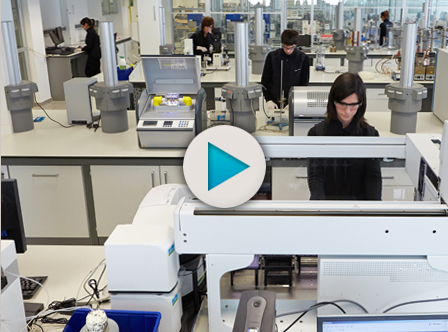THE EXPERT'S VIEW
"Better control of lubrication on the shop floor has a positive impact on profits"
Lubrication is one of the most important elements within the field of industrial maintenance, since it ensures the efficient working of the machines. It is a field with huge potential for lowering costs, increasing the useful life of machinery and ensuring more efficient production. Nevertheless, for a number of reasons the correct maintenance of lubrication systems has been relegated to second place in the vast majority of companies today.
A couple of facts and figures by way of example: 92% of factories lack adequate lubrication procedures and 74% do not use lubricant analysis as a monitoring tool.
Lubrication
By definition, lubrication is the process or technique used to reduce friction between two loaded surfaces located in close proximity and moving relative to each other, by inserting a film called lubricant between them.
Right from its conception, lubrication management has been a key aspect in maintenance, and its importance has grown even more in light of recent developments in the field. The progressive increase in the sophistication of the lubricants has turned these products into extraordinary compounds, capable of separating components moving under enormous loads, despite being subject to high speeds, extreme temperatures and atmospheres with elevated humidity levels.
However, despite the fact that it is universally known within industry that lubrication is essential for correct operation, insufficient attention is paid to this aspect. As a result, the working conditions of the vast majority of industrial environments prevent the physical-chemical properties of modern-day lubricants from being fully utilised, thus rendering the benefits they are able to provide minimal. This is because, although lubricants themselves have been developed and improved, the management of lubrication has largely been ignored, resulting in maintenance that is conformist, traditional and frankly out-of-date.
According to the data obtained by IK4-TEKNIKER over the last 4 years, 80% of atmospheres in which lubricant transfer takes place are inadequate for that task, and 64% of new lubricants exceed the recommended cleaning limits.
Given this situation in the industrial sector, the challenge consists of find a way to systematically transform the usual, antiquated process of lubrication into a modern, improved and innovative system which makes full use of all the benefits lubricants have been designed to offer.
Within the typical maintenance budget, only about 5% is generally earmarked for lubricants, and just under 0.01% is spent on auxiliary lubrication material. However, around 70% of mechanical faults arise due to lubrication problems, which in turn may be generated by a number of different reasons, including the use of an inappropriate lubricant, inadequate storage, contamination by dust or water, contamination by other harmful substances or other lubricants, lack of lubrication procedures, inadequate transfer material or the lack of predictive and proactive maintenance.
Higher priority
Earmarking more money for lubrication may result in considerable improvements, while at the same time reducing the problems derived from this process.
The change required to ensure adequate lubrication is expressed as a new concept and summed up by the acronym LPD, which stands for Lubrication Programme Development. This system aims to maximise the benefits of the lubricants’ properties by implementing the idea of excellence and a series of best practices within the field of lubrication.
The LPD system views lubrication as a sequence of stages in which people, procedures and auxiliary lubrication material all intervene in a coordinated manner, with the focal point being the attainment of the principal goal: providing added value to maintenance and maximising the return on asset investment.
The aims of the programme are achieved through hard work and improvement in the following areas:
- Training of those involved in the lubrication chain
- Improvement of tasks related to storage, handling and contamination control
- Design of lubrication procedures and the taking of adequate samples
- Analysis of the lubricants, control, monitoring and corrective actions
- Management, control and lubrication indicators
The benefits
In order to establish a clear starting point, at the beginning of the process the lubrication conditions are determined and, based on the results, a lubrication engineering programme is designed aimed at maximising the reliability and availably of the assets through adequate lubrication.
In the short term, the benefits of the programme are felt in the lubricant warehouses, in the section in which lubricants are transferred from vats to smaller containers, in the integration with the maintenance management system and in the useful life of the lubricants themselves.
In the medium term, however, the clearest indication of the improvement in lubrication management is an increased return on investment, since in many cases, the investment is recouped during the second year, and from then on generates added profit.
The profitability of the investment is evident in a reduction of non-scheduled downtime, a decrease in the amount of lubricant required, the lengthening of the useful life of both lubricated components and lubricants themselves and the better use made of operator hours. Other advantages include a reduction in lubricant consumption, a smaller stock of parts and workpieces, reduced energy consumption and an increase in the reliability and availably of the machinery.
Raising the awareness of those responsible for carrying out maintenance helps move lubrication towards levels of excellence, while at the same time bringing about a change which provides measurable, quantifiable benefits in a very short space of time.





